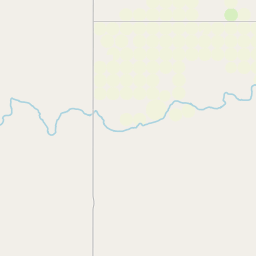St. John's Lutheran Church Cemetery







Early homesteaders in Lipscomb County were russians of German descent. These included Jacob M. And Amalia Koch, who were members of St. John’s Evangelical Lutheran Church, established by the German Russian settlers in 1914. By 1916, the Koch family allowed church members to use this land as a burial ground; they deeded the land to the church in 1950. The first burial was that of baby Hildegard Schilling in January 1916. The cemetery today is a link to early Lipscomb County settlers and to their German Russian Heritage, as chronicled on the gravestones.
Historic Texas Cemetery - 2005
As one of the most visible programs of the Texas Historical Commission (THC), historical markers commemorate diverse topics in Texas history, including: the history and architecture of houses, commercial and public buildings, religious congregations, and military sites; events that changed the course of local and state history; and individuals who have made lasting contributions to the state, community organizations, and businesses.
Texas was once an independent country: After winning its independence from Mexico in 1836, Texas became its own country, known as the Republic of Texas. It existed as an independent nation for nine years before being annexed by the United States in 1845.
The county's early settlers faced numerous challenges, including harsh weather conditions, limited resources, and conflicts with Native American tribes. Many early pioneers were drawn to the area for its fertile soil and opportunities for cattle ranching. The arrival of the railroad in the late 1800s brought further growth and development to the county.
During the early 20th century, Lipscomb County experienced a boom in agriculture, with cotton and wheat becoming the primary crops. The discovery of oil in the area in the 1920s brought a new wave of prosperity and economic growth. The county saw an increase in population and the establishment of new businesses.
Today, Lipscomb County remains largely rural, with agriculture and oil production continuing to be significant industries. The county's rich history is celebrated through various historical sites and museums, which preserve the stories and heritage of the early settlers who shaped the area.
Lipscomb County Timeline
This timeline provides a glimpse into the major events and milestones that have shaped the history of Lipscomb County, Texas.
- 1876 - Lipscomb County was established on August 21, becoming the last of the 254 counties in Texas.
- 1887 - The town of Lipscomb, which would later become the county seat, was founded.
- 1902 - The Northeast Texas Panhandle was opened up for settlement, leading to an influx of farmers and ranchers into Lipscomb County.
- 1907 - The Chicago, Rock Island and Gulf Railway established a line through Lipscomb County, boosting transportation and economic development in the area.
- 1911 - Lipscomb County's first courthouse was built in Lipscomb.
- 1920s - The oil boom hit the Lipscomb County area, bringing prosperity and economic growth.
- 1926 - The town of Lipscomb was incorporated.
- 1940s - The oil industry continued to thrive, and agriculture remained a significant part of the county's economy.
- 1969 - The Lipscomb County Courthouse, which served as the county seat, was destroyed in a fire.
- 1970 - The current courthouse in Lipscomb was built, serving as the county seat.